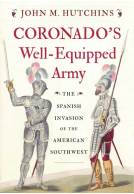Braddock's March (Paperback)
How the Man Sent to Seize a Continent Changed American History
(click here for international delivery rates)
Need a currency converter? Check XE.com for live rates
In 1755, Major General Edward Braddock was sent by Great Britain on a mission to drive France once and for all from the New World. Accompanied by the largest armed expeditionary force ever sent to North America, Braddock’s
primary target was the Forks of the Ohio, where he planned to seize Fort Duquesne and then march north to the Canadian border. After landing in Alexandria, Virginia, Braddock organized his troops and supply chain, threatened
to billet soldiers in private homes, and called the first congress of royal governors in America to discuss using local revenue to pay for the expedition—issues that were to drive the future split between the colonies and Britain. In May, the expedition began its nearly 250-mile trek, heroically cutting through dense wilderness, fording rivers, and scaling mountains, while hauling heavy artillery and the first wheeled vehicles ever to cross the Appalachian Mountains. Braddock was joined on the expedition by a young Virginia colonel, George Washington, and others who would later play roles in the future revolution, including Horatio Gates, Thomas Gage, and Charles Lee; among those driving the wagons were Daniel Boone and Daniel Morgan. Less than a day’s march from Fort Duquesne, Braddock’s exhausted column was annihilated by a combined French and Indian force, some of whom fired rifles—probably the first effective use of this weapon in battle. Over two thirds of Braddock’s British and colonial troops suffered casualties more than in the Charge of the Light Brigade and Braddock himself fell mortally wounded, while George Washington miraculously escaped harm despite four bullet holes through his clothing. With this battle, North America at once started and was drawn into a global war between Britain and France.
In Braddock’s March: How the Man Sent to Seize a Continent Changed American History, Thomas E. Crocker uses a wealth of sources including newly discovered letters to tell the story of one of the most important events in the American colonial period. Not only did Braddock’s expedition have a profound impact on American military and political developments, this fateful march opened the first major road for westward expansion, anointed a
national hero in George Washington, and sowed the seeds for the American Revolution.
Long dismissed as an example of British incompetence and blundering, this new revisionist work restores the episode [of General Braddock's fatal march into the Ohio Valley in 1755] to its central role in the history of the British Empire and the United States.
Military Times
In a detailed narrative, Crocker argue that the expedition was the key event in the history of America in the 18th century and one that profoundly shaped the course of events to the American Revolution and beyond.
The author reconstructs the route of the difficult and dangerous 250-mile march itself from the many surviving eyewitness accounts, describing the final ambush at the Monongahela River, and the aftermath and outcome of this military disaster.
The work does not go into exhaustive detail on military formations and tactics, preferring to devote the bulk of the work to the central events themselves.
What is a welcome touch is the selection of potted biographies of the main protagonists at the end of the book, bringing the course of their subsequent careers to light.
This attractive and concise work offers a thoughtful introduction to the background events to the Seven Years' War in North America, debunking a number of well-worn myths on the way. Throughout there are carefully chosen maps and contemporary illustrations, bringing the whole epic to life.














